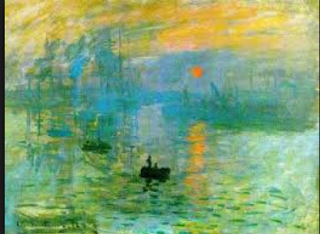Counter melody can be defined a sequence of notes, perceived as
a melody that is played at the same time as a prominent leading. A counter
melody is similar to a secondary melody that is played in counter point with
the primary melody. The lines have independency from each other and can function as their own melody. Pagodes appears to use counter melodies and has a
contrapuntal texture, while Tabuh Pisan creates a similar sounding contrapuntal
texture.
In Pagodes, the use of
layers and contrapuntal texture can be first seen in measure 7 to 9, where
there are 3 independent layers to the measures:

If we look at measure 7,
counter melody is evident as the right hand plays an ostinato while the left
hand plays a counter melody.
We can see that the first layer lies in the use of the pedal
note, low F sharp, while the middle layer (highlighted by the blue pen)
consists of eight notes, a moderate speed, with the last layer (highlighted by
the black pen) consists of eight and sixteenth notes, moving at a higher speed
in comparison with the other two layers. Linear contrapuntal movement can be
seen between the middle and top layers(“Types of Contrapuntal Motion”).
The left hand plays that melody that is countered by the right hand counter melody of triplet notes played in ascending notes of a pentatonic scale.
This contrapuntal texture can be seen in the use of layered sections in Tabuh Pisan. Different instruments play different melodies simultaneously that layer on top of each other, creating a rich and complex sound. Where the gong plays an ostinato (every four beats it is struck once). The gong is immediately followed by a three note melody played by the rebab. The kendhang also plays a fast percussive rhythm that punctuates the piece.
Audio Example Track 1
Together, the contrapuntal melodies of Tabuh Pisan and Pagodes create a contrapuntal texture in the pieces. Debussy mimics the typical Gamelan use of layering with the structuring of his counter melodies. In Gamelan music, instruments with a lower pitch tend to play slower melodies, where as instruments in a higher register play at more rapid tempos. Referring to figure 5, the red section (low part) is the pedal note, hence, the lowest register. This pedal note is similar to the punctuating sound of the gong that is played in Tabuh Pisan and it is the slowest section of the piece. The middle section plays a faster melody, in Pagodes; this blue highlighted section is composed of eight notes. The highest section, marked by blue pen, is composed of eight notes and sixteenth notes and plays the faster most elaborate melody. Together these three sections work together to create a contrapuntal texture of the piece.
When comparing the use of countermelodies in both Tabuh Pisan and Pagodes it is crucial to note that the effect of the countermelody in each piece differs from each other. While Pagodes creates a distinctive gamelan sound, there is a hierarchy of melodies where sometimes, the right hand plays a melody that is slightly more dominant than the countermelody played by the left hand. This is evident in measures 7-9 as well because while the left hand and the right hand are playing a counter melody and a primary melody, even though they are independent from each other, it is clear that the melody in the left hand is more dominant that the ostinato that the right hand is playing. As the ostinato is static it serves as a back up melody that adds depth to the overall sound of the piece. This is reflective of the French impressionist style, that is part of western music culture and usually has a more dominant melody. However, in Gamelan music, a key characteristic of the Gamelan Ensemble is that each instrument is equal in its standing and no instrument is more dominant than the other. The emphasize is on collaboration and the sound that is created when all the interlocking melodies from each instrument come together. The use of countermelody in Tabuh Pisan gives each independent melody, whether its a countermelody or a primary melody equal standing, and the overall sound of the Tabuh Pisan can only be created when the various interlocking melodies are played simultaneously. However, it is crucial to state, that Debussy only had the piano as he tried to re create the shimmering sound quality created by an ensemble of various instruments.










